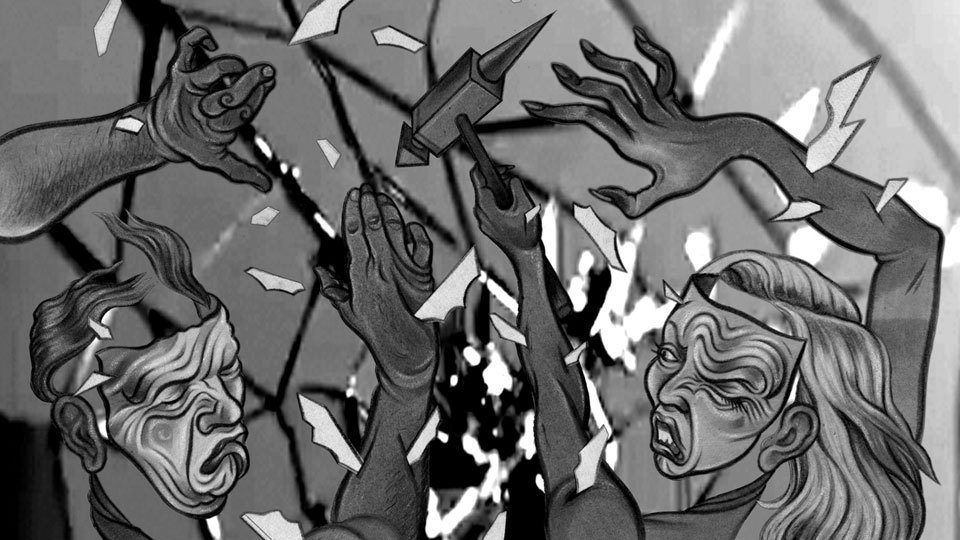TBA Review: Daniel Barrow

Image: Daniel Barrow
Daniel Barrow is a magician. Using nothing but live narration, an overhead projector, a series of slides, and the audience’s own optical illusions, he creates lush, animated fairy tales about a harlequin thief who steals diamonds and tears from the rich, and a literary loving man who can’t find love.
Barrow’s first tale, The Thief of Mirrors, is inspired equally by French Baroque painter Jean-Antoine Watteau’s Harlequin Pierrot character and by the kissing bandit urban myth of Barrow’s childhood about a thief who comes in the night, steals all of the jewels, and leaves a kiss and a rose. In Barrow’s hands, though, the story becomes a rich, anachronistic, economic parable about a sad clown whose dress is Baroque, but whose narration is wholly contemporary. He discusses the $400 per hour therapy sessions of his victims, saying “Crime is a class privilege,” before robbing them of their jewels, tears, and general sensibility of the world, leaving them only the reflection of his sad face in the mirror.
Barrow’s second story, Looking for Love in the Hall of Mirrors, also weaves in Watteau and mirrors. It then goes on to draw equally on the writing of Quentin Crisp and Oscar Wilde’s Picture of Dorian Gray to tell the story of a young man who ages into a less than attractive older man and unrequitedly seeks love among the bushes of a park known for gay cruising, although he handles the topic of homosexuality in a most indirect, Victorian fasion. Oddly, the story is told through letters to his parents.
Daniel Barrow: The Thief of Mirrors & Looking for Love in the Hall of Mirrors
Whitsell Auditorium at the art museum
Sat at 8:30
Barrow’s story telling is as lyrical and ornate as his characters. His prose is practically poetry, albeit very dense poetry that, particularly in the second story, grows hard to penetrate. His references are numerous, and I envy the person who can catch them all. While I found the musings of the second story to grow rather burdensome, there is no denying the true joy of his self-pioneered craft: the transformation of a teaching tool most of us thought abandoned to the dumpster of history, the overhead projector. His illustration style feels like a simple children’s book, but the way he brings the images to life, manipulating the overlay of slides, their focus, and expert optical tricks is quite magical. I recommend sitting in front of him, so you have only the screen to look at instead of trying to dissect the wizard’s tricks.
